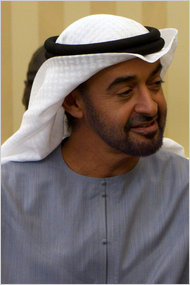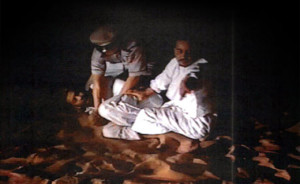UAE: Reports of systematic torture in jails
June 27, 2013 Amnesty
 United Arab Emirates state security officers have subjected detainees to systematic mistreatment, including torture, say hand-written letters from detainees smuggled out of jails, Alkarama, Amnesty International and Human Rights Watch said today.
United Arab Emirates state security officers have subjected detainees to systematic mistreatment, including torture, say hand-written letters from detainees smuggled out of jails, Alkarama, Amnesty International and Human Rights Watch said today.
The groups obtained 22 statements written by some of the 94people on trial for allegedly plotting to overthrow the government. The mistreatment described in the letters is consistent with other allegations of torture at UAE state security facilities, and indicates that torture is a systematic practice at these facilities.
The statements describe conditions in pre-trial detention in varying levels of detail. Several detainees describe mistreatment that clearly meets the definition of torture as outlined in article 1 of the United Nations Convention Against Torture and Other Cruel, Inhuman or Degrading Treatment or Punishment, which the UAE ratified in July 2012. “I was beaten with a plastic tube all over my body,” one detainee said. “I was tied to a chair and threatened with electrocution if I didn’t talk. I was insulted and humiliated.”
“The UAE’s judicial system will lose all credibility if these allegations are swept under the carpet while the government’s critics are put behind bars,” said Joe Stork, deputy Middle East director at Human Rights Watch. “Unless the government investigates and takes action, it will be hard to avoid concluding that torture is routine practice in the UAE.”
On March 4, 2013, at the first trial hearing, some defendants told the judge they had been seriously ill-treated during months in detention. They described prolonged solitary confinement, exposure to continuous fluorescent lighting that made it difficult to sleep, inadequate heating, and hooding when they were taken from their cells — including while being taken to the toilet or for interrogation. They said they had been repeatedly insulted by prison guards. People present in the court said that the judge ordered that the detainees undergo medical examinations, but these did not take place.
The letters obtained by the rights groups indicate that these forms of mistreatment were systematic. All of the detainees who described their conditions said they were held in solitary confinement where they were constantly exposed to bright light in their cells.
All but six said they were subjected to extremes of temperature and that men who claimed to be state security officials interrogated the detainees while they were blindfolded. Two described being threatened with electrocution.
“I heard muffled sounds and screams, suggesting systematic torture, knocking on the iron doors to prevent me from sleeping, and very loud noises from the AC hatch, like airplane engines,” another detainee said.
The allegations in the letters are consistent with previous allegations of torture. Amnesty International documented credible claims of torture in 2003 and raised concerns over the treatment of a UAE national in 2007, along with a US-Lebanese national in 2009.
In September 2012, a Syrian national, Abdulelah al-Jadani, told Human Rights Watch that officers at a state security facility beat and whipped him, held him in painful stress positions, and hung him from the wall by his arms and legs. He also said he was subjected to severe sleep deprivation and extreme cold in his cell.
At the time Al-Jadani’s allegations emerged, the whereabouts of the Emirati political detainees were unknown, and local sources told the organizations that it was likely they were being held in the same state security facility where al-Jadani alleges he was tortured. On September 6, six of the 94 detainees appeared before a judge at the Supreme Court. The son of one of the detainees was in the courtroom and reported that they seemed dishevelled, disoriented, and distressed.
Other detainees have also alleged that they have been tortured. One is Saud Kulaib, who is being held in Al Sader jail, but spent five months in incommunicado detention between December 29 and May 27. Since his move to Al Sader, Kulaib has told family members and other inmates that he spent all of that time in solitary confinement, and that he was subjected to extremes of temperature and sleep deprivation.
He also alleges that officers beat him, sliced his hand open with a razor blade, threatened to pull out his fingernails and told him that his wife was in detention and on hunger strike:
“I was suspended several times from the legs, by an iron rod, in an extremely painful position, between two chairs while my hands were tied with an iron chain, leaving marks that are still visible today,” said Kulaib.
“I was then severely beaten on the legs for more than half an hour. Next cold water was poured over my head and body. At times my clothes were taken off, leaving only my under-shorts, to torture me in the manner already described.”
It is not clear what charges Kulaib is facing. Local sources believe that his detention relates to comments he made on social media about the alleged torture of one of the 94 defendants, Ahmed al-Suweidi. On June 10, 2012 Kulaib posted a comment on Twitter in which he said that al-Suweidi was “being exposed to severe torture under the supervision of a high official.”
In September, Alkarama and Human Rights Watch documented the enforced disappearance of al-Suweidi for a period of six months. Local activists believe that a forced confession from al-Suweidi forms the basis of the prosecution’s case in the trial. On March 4, during the first session of the trial, al-Suweidi, told the judges: “I know that what I’m going to say may cost my life, but I deny the charges and I ask the court to protect my life and the life of my family,” witnesses who were in the courtroom said.
“Not investigating such serious allegations of torture would add to the litany of the violation of the 94 defendants’ rights, from the vague the charges brought against them for their association with al-Islah, or the Reform and Social Guidance Association, to their rights of defence being repeatedly flouted,” said Hassiba Hadj Sahraoui, Deputy Director of Amnesty International’s Middle East and North Africa Programme.
Another group of 30 people accused of operating a branch of the Muslim Brotherhood have also alleged that they were tortured. On June 19, UAE authorities referred them for trial at the Federal Supreme Court. The authorities have not released their names, although local sources believe they include 13 Egyptians detained between November 21 and January 7.
The son of one of the detainees, Dr Ali Sonbul, told Human Rights Watch that family members of the detainees who have visited the men in prison told him that they are being kept in solitary confinement and have been subjected to “psychological and physical torture.”
To mark the International Day in Support of the Victims of Torture on June 26, Human Rights Watch, Amnesty International and Alkarama call on UAE authorities to:
• Provide independent forensic medical examinations to defendants who say they have been tortured; • Exclude any evidence obtained by torture from any trial proceedings; • Ensure prompt, independent, and impartial investigations into allegations of torture and other ill-treatment, enforced disappearances, and other serious human rights violations and bring those responsible to justice in proceedings that comply with international fair trial standards; and • Ensure that victims of torture, enforced disappearance, and arbitrary detention receive full reparations. • Provide for the independent inspection of all detention centers. • Ratify the Optional Protocol to the United Nations Convention Against Torture and Other Cruel, Inhuman or Degrading Treatment or Punishment.
On June 7, the foreign minister, Dr Anwar Gargash, told the UN Human Rights Council in Geneva that any allegation of torture in the UAE would be “dealt with in accordance with the laws of our country and the measures provided by the law will be taken in case of violation.”
“To prove his intentions to the international community, Dr Gargash should order investigations into all allegations of torture and mistreatment committed by the state security services, including those made by the UAE 94,” said Rachid Mesli, director of Alkarama’s legal department.
For further information, please contact Elizabeth Berton-Hunter 416-363-9933 ext 332 bberton-hunter@amnesty.ca
The strategy extends far beyond! Read more reports on UAE
UAE behind Egypt coup d’état: Cash and loans from UAE to crush ‘Arab Uprising’. Strategy beyond the borders!
UAE: Arming up with mercenaries!
What possible security risks could have motivated the UAE to hire outside help?
Photograph: The Colombians had entered the United Arab Emirates posing as construction workers. In fact, they were soldiers for a secret American-led mercenary army being built by Erik Prince, the billionaire founder of ‘Blackwater Worldwide’, with $529 million from the oil-soaked sheikdom. Read Article at New York Times: Sheik Mohamed bin Zayed al-Nahyan of Abu Dhabi hired Erik Prince to build a fighting force
Lieutenant General Sheikh Saif Bin Zayed AlNahyan – The Making of a Police State http://www.boycottuae.com/uaeblog/sheikh-saif-bin-zayed-al-nahyan-the-making-of-a-police-state
Boycott-UAE Video:
 The man in this video, seen torturing an Afghani businessman, is none other than Sheikh Issa bin Zayed al Nahyan, the brother of the President of United Arab Emirates. The UAE interior minister, Saif bin Zayed al Nahyan, is also one of Sheikh Issa’s brothers. Policemen (ADPolice) in uniform pin the victim to the floor as the sheikh uses an automatic rifle, whips, electric cattle prods, wooden planks with protruding nails and even his Mercedes SUV to torture his victim.
The man in this video, seen torturing an Afghani businessman, is none other than Sheikh Issa bin Zayed al Nahyan, the brother of the President of United Arab Emirates. The UAE interior minister, Saif bin Zayed al Nahyan, is also one of Sheikh Issa’s brothers. Policemen (ADPolice) in uniform pin the victim to the floor as the sheikh uses an automatic rifle, whips, electric cattle prods, wooden planks with protruding nails and even his Mercedes SUV to torture his victim.
Sheikh Issa was acquitted in an Emirati court for the incident. The court ruled that “he was not responsible for the crime, that the sheikh was under the influence of drugs (medicine) that left him unaware of his actions”. [Warning: the images may be disturbing] View Video http://www.youtube.com/watch?v=Ks_MIRvmx9E
Read Featured Report: UAE PRISON
http://www.uaeprison.com/sheikh_nahyan_uae_shocking_torture_video.htm

